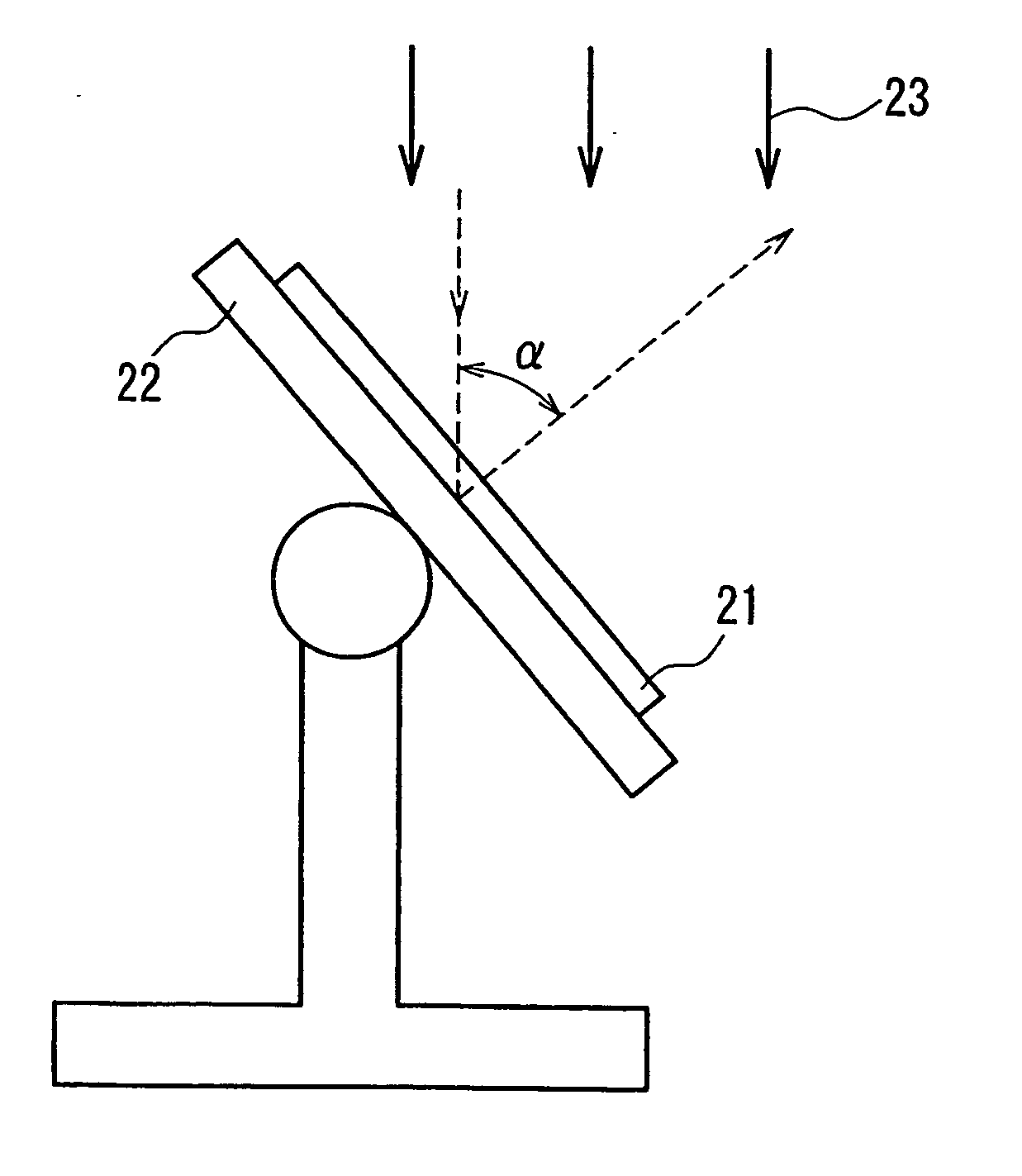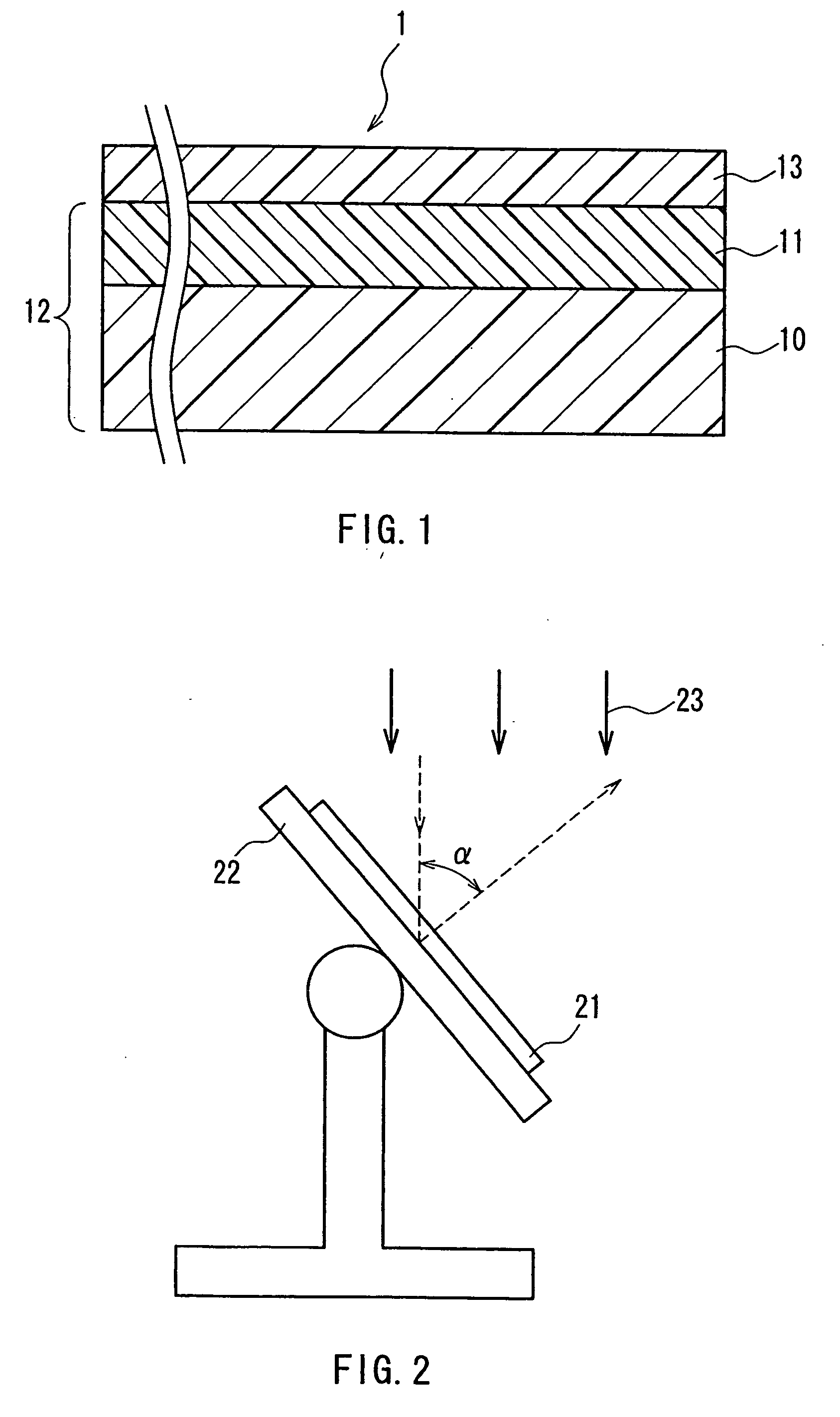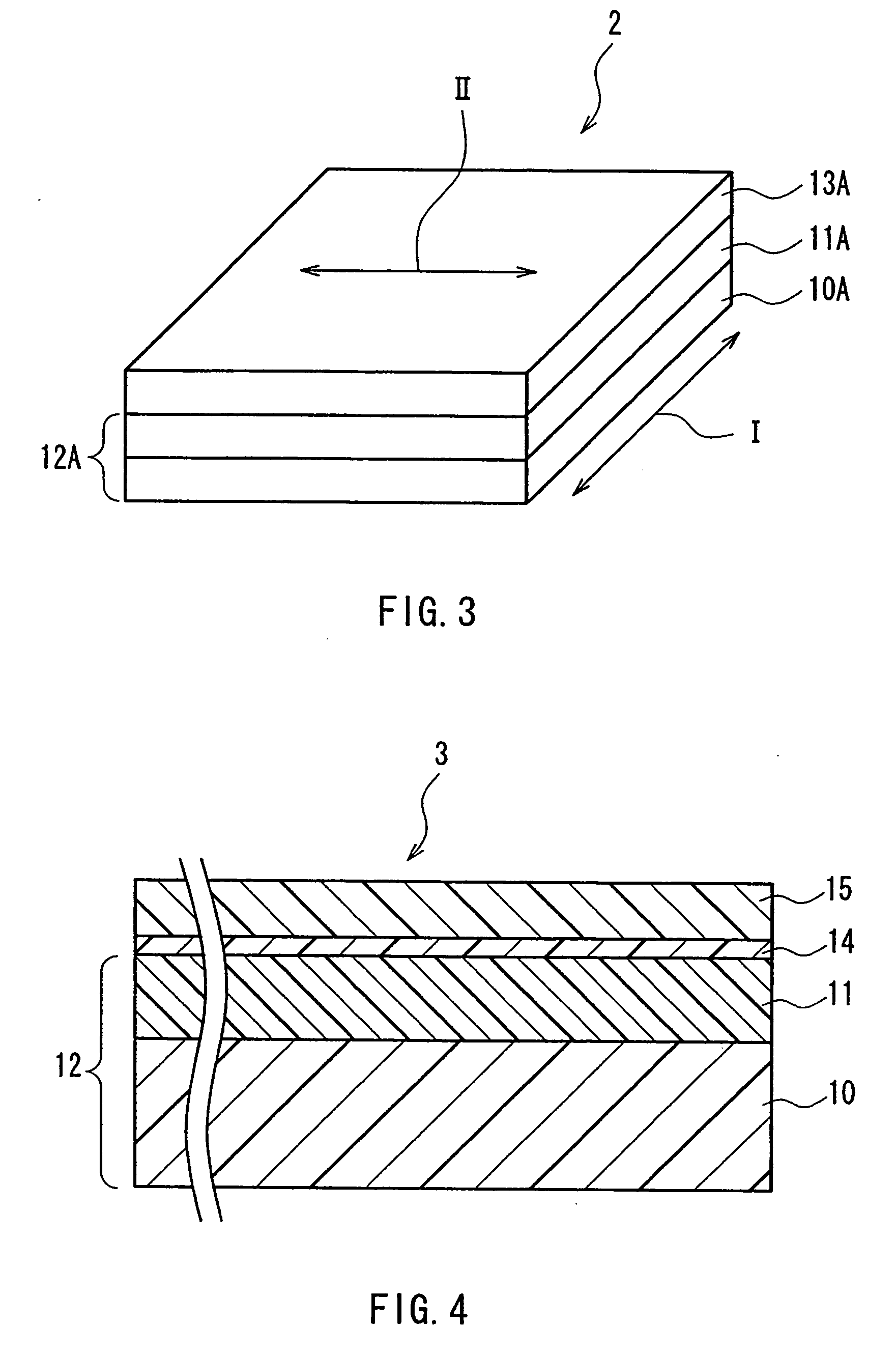Phase difference film and production method therefor
a technology of phase difference film and production method, which is applied in the direction of instruments, polarising elements, non-linear optics, etc., can solve the problems of increased production cost, easy corrosion, and increased materials and processes, and achieve the effect of low cost production
- Summary
- Abstract
- Description
- Claims
- Application Information
AI Technical Summary
Benefits of technology
Problems solved by technology
Method used
Image
Examples
example 1
[0148]FIG. 1 shows a cross-sectional view of a retardation film produced in this Example. As shown in this figure, the retardation film 1 includes a transparent base 10, an optically anisotropic layer 11 and an optical retardation layer 13 laminated in this order, and the transparent base 10 and the optically anisotropic layer 11 form a base-attached anisotropic layer 12.
[0149] The retardation film 1 was produced in the following manner. First, a triacetylcellulose (TAC) base about 80 μm in thickness was prepared to make the transparent base 10.
[0150] Next, the base-attached anisotropic layer 12 was produced. Specifically, a 15 wt % solution of polyimide was prepared first. The polyimide in use was a copolymer of 2,2-bis(3,4-dicarboxyphenyl) hexafluoropropane (6FDA) and 2,2′-bis(trifluoromethyl)-4,4′-diaminobiphenyl (PFMB), and methyl isobutyl ketone (MIBK) was used for a solvent. This polyimide solution was applied onto the transparent base 10 and dried with heat at 130° C. for 1...
example 2
[0154]FIG. 3 is a perspective view of a retardation film produced in this Example. As shown in this figure, this retardation film 2 includes a base-attached optically anisotropic layer 12A containing a transparent base 10A and an optically anisotropic layer 11A, and an optical retardation layer 13A. In the figure, an arrow I denotes a stretch axis direction of the base-attached optically anisotropic layer 12A, and an arrow II denotes a polarization axis direction of the polarized ultraviolet light irradiated on the optical retardation layer 13A, and the both directions cross each other at right angles.
[0155] This retardation film 2 was produced in the following manner. First, a base-attached optically anisotropic layer was produced in the same manner as in Example 1, and was stretched by 10% its original length by a free-end uniaxial stretching at 150° C. in order to provide a base-attached optically anisotropic layer 12A having both the positive A-plate component and the C-plate c...
PUM
| Property | Measurement | Unit |
|---|---|---|
| Thickness | aaaaa | aaaaa |
| Transparency | aaaaa | aaaaa |
| Anisotropy | aaaaa | aaaaa |
Abstract
Description
Claims
Application Information
 Login to View More
Login to View More - R&D
- Intellectual Property
- Life Sciences
- Materials
- Tech Scout
- Unparalleled Data Quality
- Higher Quality Content
- 60% Fewer Hallucinations
Browse by: Latest US Patents, China's latest patents, Technical Efficacy Thesaurus, Application Domain, Technology Topic, Popular Technical Reports.
© 2025 PatSnap. All rights reserved.Legal|Privacy policy|Modern Slavery Act Transparency Statement|Sitemap|About US| Contact US: help@patsnap.com



